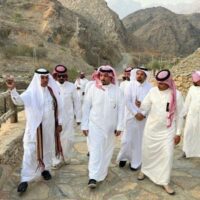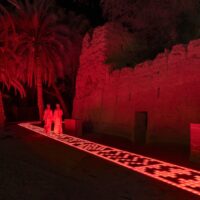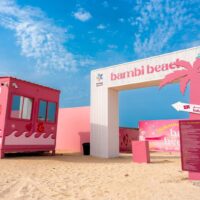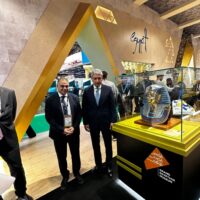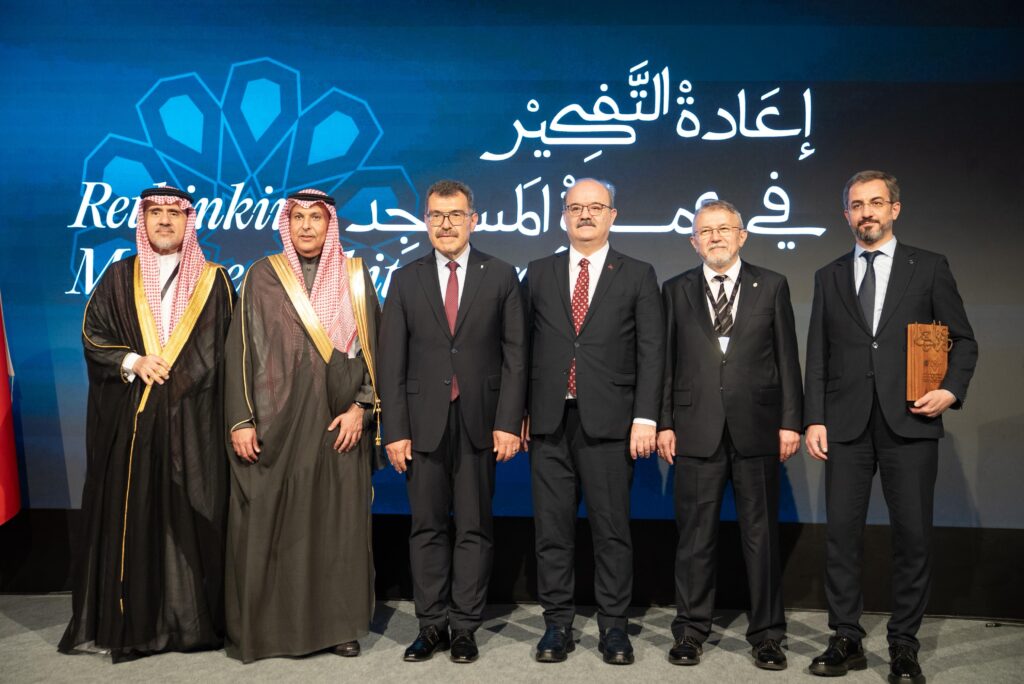Reported by :Ahmed Ali Alzahrani
I stood meditating, looking at the remains of that village, which is embraced by mountains from everywhere, forming a wonderful harmony between nature and architecture that smells of history. and Immersion in the past in its most beautiful details
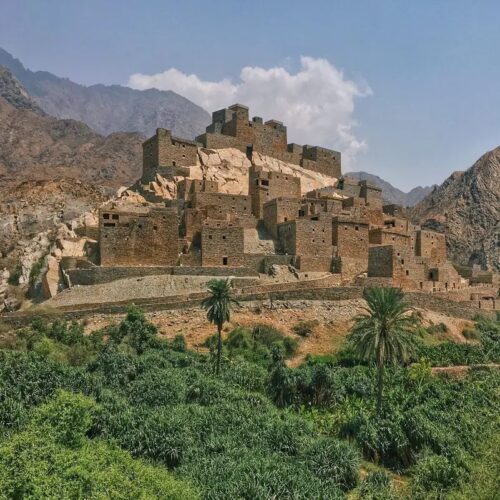
The chant of history written by nature in green letters and colors of the rainbow. It fascinates with its beauty, its mountains, and its people. Its forts stand as tall as its mountains. It tells stories and tales. Its ancient houses made of stone remain a witness to the history of its first people, how they carved homes from the mountains and how they used the rocks and stones in building homes and fortresses and how they roamed The rock in the valley is a village that bears in its memory an ancient past and a glorious heritage, in which the architecture and its topographical construction appeared, which indicates that there was an ancient civilization during the era of its construction, knowing that nearly 400 years have passed, and the village of Thee Ain is still on The popular prominent tourist attractionse village is one of the of historical villages in which the region abounds, including a village Al-Khalf and Al-Khalif is one of the villages belonging to the Qilwah Governorate at the confluence of important valleys, such as(valley) Wadi Mehla and(valley) Wadi Reem, which descend from Neis, Mountain the largest of the Tihama mountains, one of the oldest ancient villages In the Arabian Peninsula
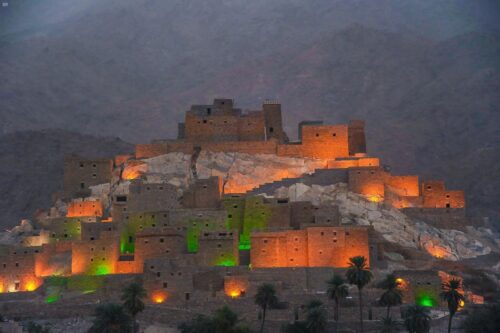
The area, which is also famous for its exquisite architectural style based on stone embroidered with white arches
It is among the most important traditional villages in the Al-Baha region, and it was built on a mountain top featuring a unique urban heritage organization and environmental configuration and its picturesque view towards the surrounding farms that includes 312 houses, and one mosque. The houses were built from polished stones, with multiple floors from two to four floors that are similar in terms of planning, dating back to the end of the 10thcentury AH/8th century CE. The village is further characterized by the presence of a permanent water source and defensive fortification surrounded by mountains on three sides.
Thee Ayn Name:

The village was named after a water spring continuously flowing from the nearby mountains to several reservoirs and each particular pond has its own name. There is a local legend that talks about a man lost his cane in one of the valleys, and to retrieve it he tracked it until he reached the village, he gathered its inhabitants and retrieved his cane after digging the spring.
The village is distinguished by its heritage, cultural, urban, historical and economic elements, and was classified as the best heritage village in the Kingdom, according to the classification of the General Authority for Tourism and and its inclusion in the UNESCO World Heritage.
The agricultural terraces constitute the largest part of the area of the village located on top of a hill overlooking the agricultural lands that surround it. The village is a nucleus within the extended land with orchards and fruit trees. The total area of agricultural terraces is approximately forty thousand square meters. These terraces are distinguished by the production of a number of local products, annually producing more than 25,000 kilograms of bananas and about 70,000 berries of caddy,
In order to increase the tourist attraction of the village, and to market the products of the village farmers, the governor of Al-Baha region, His Royal Highness Prince Dr. Hossam bin Saud bin Abdul-Aziz, inaugurated the “Banana and Caddy” festival.

The festival, which lasts for three days and witnesses many accompanying events, including holding a women’s course on the secrets and composition of perfumes, and foods made from banana products and its derivatives, in addition to a variety of activities between educational, entertainment and heritage, and the participation of the branch of the General Authority for Tourism and National Heritage in an exhibition on the development of stages Work in the village of Thee Ayn, and the participation of agricultural affairs in Al-Makhwah in an awareness and educational exhibition and many accompanying exhibitions. The Saudi Tourism Authority succeeded in allocating an amount of 16 million riyals for the rehabilitation project of the village aimed at restoring and developing the village and turning it into a tourist attraction. The project was divided into three phases.



